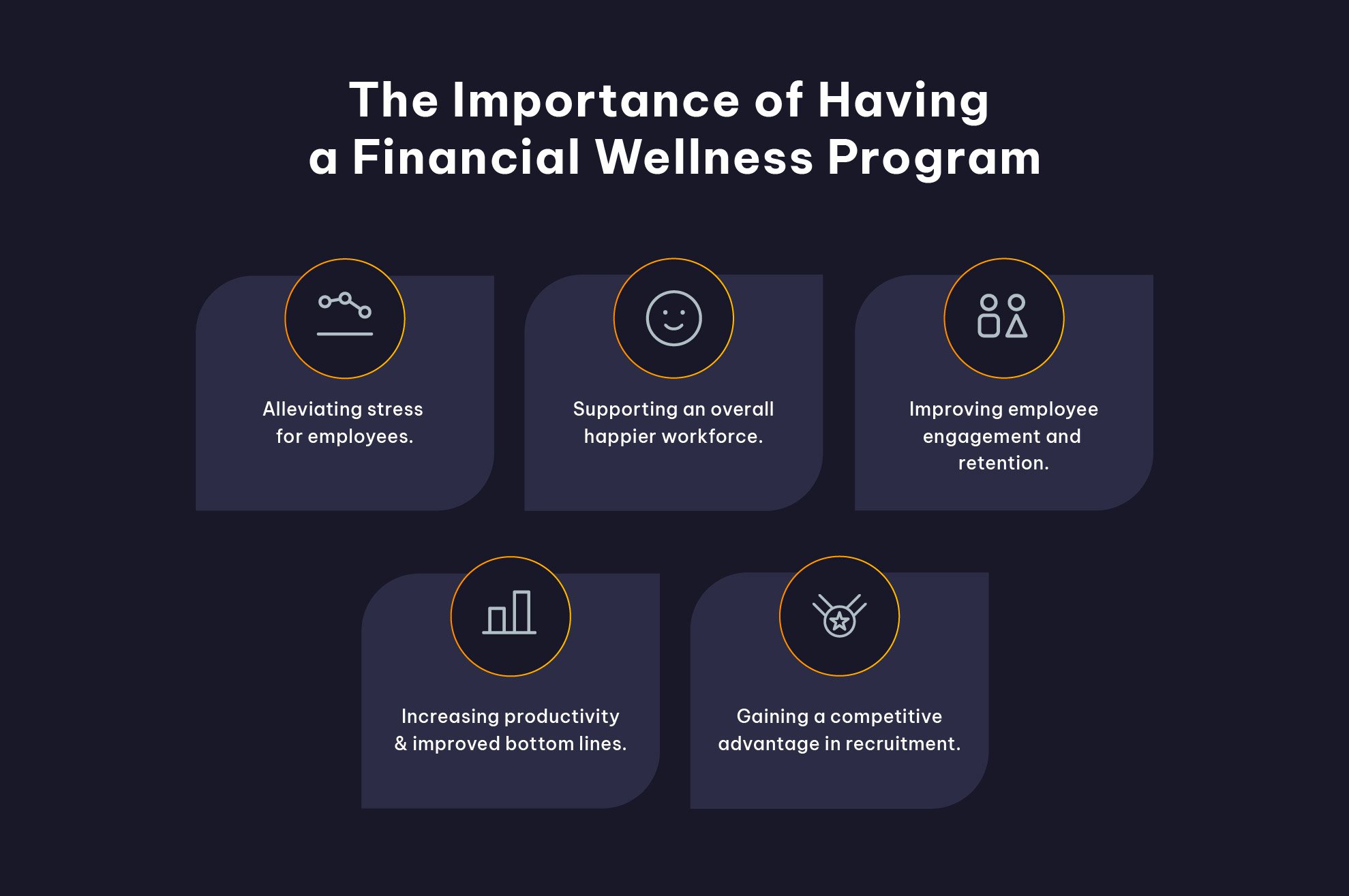Financial Well-being For Your Employees

Richard Limpkin
Chief Product Officer at Immedis
UKG Inc., a leading provider of HR, payroll, and workforce management solutions announces entering into a definitive agreement to acquire Immedis. Read More

Chief Product Officer at Immedis
Stress is rampant in the modern world, and financial difficulty is one of its greatest causes. Improving the financial well-being of your employees can go a long way in reducing their stress levels and making them better performers at work. It is a way of boosting your business’ bottom line by strengthening theirs.
Financial well-being is defined as having four parts:
Many people are not aware of how best to track their financial well being or even aware of the components of it. They lack confidence in their financial affairs, overlook their everyday expenses, don’t plan for the future, and are exposed to unforeseen events. Not surprisingly, this creates layers of stress and worry on top of ordinary work responsibilities, reducing their ability to function.
But fortunately, businesses can promote employee financial well-being by offering savings and financial education programs. In particular, payroll is a powerful tool for organizing and carrying out these programs. It can provide a wealth of information to employers and employees alike, and serve as an entry point for financial well-being programs.
Immedis and GPA performed a survey to examine the effects of a lack of financial well-being on employees.
What we found was staggering:

It’s not surprising, then, if employees feel disengaged and distracted. Employees have to shoulder the burden of the unknown, with the potential for a sudden accident could happen at any time.
Estimates put the business cost of employee financial stress at over $500 billion per year. This is a result of lower productivity rates, a decrease in employee engagement, and an increase in absenteeism.
To put that into perspective, sickness costs businesses between $150 and $250 billion per year in the United States. Improving employee financial well-being is one of the best steps that a company can take to save money.
There is a broad consensus that employers share some of the responsibility for their employees’ financial well-being. Obviously, each employee makes their own financial decisions, and it is not up to the employer if they consciously choose to make poor financial decisions. But employers can improve employee well-being by helping their employees with financial literacy and planning, just as they do by providing options for retirement and healthcare.

GPA survey results indicate the extent to which employers feel they are responsible to their employees:
These responsibilities go hand-in-hand with expected employer responsibilities to the employees, such as providing healthcare, childcare, training, and other benefits. In each of these cases, the employer helps the employee in a way that also benefits the company as a whole.
Of course, attitudes may vary over geographic location. Firms in the United States often have a more “hands off” and independent attitude towards employee affairs, coupled with relatively few legal requirements on the benefits they provide. European firms, by contrast, have far greater formal responsibilities to their employees.
Attitudes may also vary across industries. Silicon Valley firms may resemble their European counterparts in their willingness to provide for their employees. Restaurants and hotels, by contrast, are more likely to provide few or no benefits.
Despite the benefits of providing financial wellness programs to employees, few firms do so. A mere 23% of companies provide financial education.

But such programs create several advantages for the company, including:
Like all things having to do with money and employee wellness, a financial education program starts with payroll. Payroll is the primary source of your employees’ income, and it is a great source of financial information.
The payslip provides income position information. Understanding this information helps employees maintain their repayments and savings contributions.
Payslip insights help employees to better understand what they are getting paid and what deductions are being made and why they are being made. It can also indicate savings and services that might be covered, like contributions to pension schemes and healthcare.
Payday is also an email opportunity, as employees are more likely to engage with information about their payslips. This is an opportunity to promote financial wellness offerings and ask employees what they want to see in their financial wellness program.
Additionally, you can use the power of payday engagement to promote employee benefits and other financial wellness program initiatives when income is top of mind.
There is a direct line between payroll and company performance. Payroll can be used to promote financial well-being programs, which in turn reduce employee stress and make them more productive.
But payroll is so much more than that. Payroll is the core of company-employee interactions, and so affects almost everything a business does.
Human Resources, in particular, need to work closely with Payroll to make sure that employees are paid fairly and on time. Lackluster payment is perhaps the worst thing you can do for your employee relationships since payment is the primary signifier of an employee’s perceived value.
Additionally, payroll processing and reporting requirements vary widely across countries. Companies with a global presence have to be careful to comply with regulations and pay employees properly wherever they are.
Global payroll is the best way to accomplish this. Services like Immedis centralize all information about payroll, integrate with HR, and can adjust to fit the needs of different locales. They are a simple solution to the challenges of a global, 21st-century workforce.
Immedis Blog





